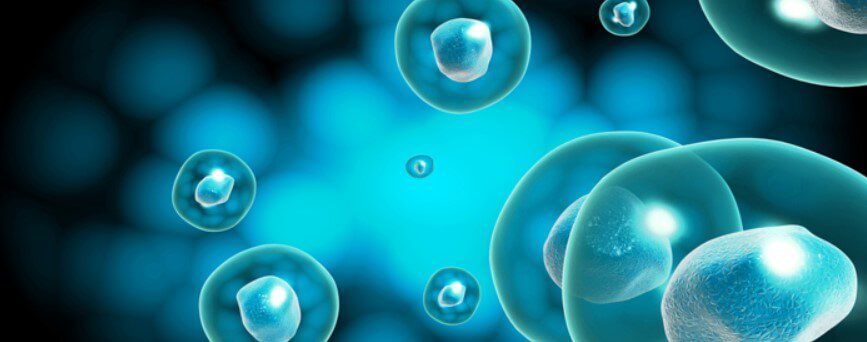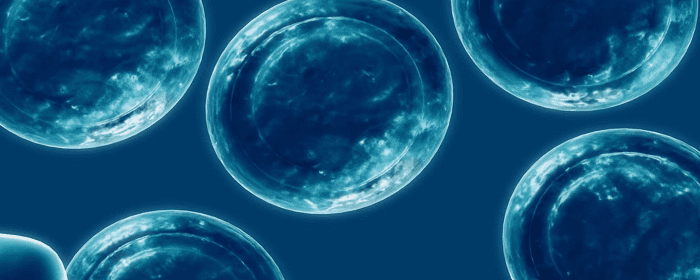
by Stemedix | May 27, 2024 | Health Awareness, Neurodegenerative Diseases, Parkinson's Disease, Stem Cell Research, Stem Cell Therapy
Getting any serious medical diagnosis can be frightening and intimidating. You might be unsure of what to do next or how to manage your condition. When it comes to Parkinson’s disease, the future can be even more uncertain since it’s a progressive neurodegenerative condition. It’s important to make a plan for how you’ll proceed after receiving a Parkinson’s diagnosis. You aren’t alone on your journey. Here are some steps you can take after your doctor tells you that you have Parkinson’s disease.
Understanding Your Diagnosis
Before you make an action plan, you should fully understand your Parkinson’s diagnosis. It’s important to know how this disease can affect your physical, mental, and social health in the future.
Parkinson’s Symptoms
Every person with Parkinson’s experiences the disease slightly differently. However, there are some common symptoms to watch out for as the disease progresses.
Common Parkinson’s symptoms include:
- Muscle tremors
- Insomnia
- Muscle stiffness
- Slow movements
- “Shuffle walk”
- Hunched or stooped posture
- Small handwriting
- Sudden soft or low speech
- Mood swings
- Sudden weight loss
- Decreased appetite
- Poor balance and coordination
- Dizziness and fainting
These are just a few of the warning signs and symptoms that Parkinson’s is progressing. Often, motor symptoms are the giveaway that someone has Parkinson’s over other diseases. It’s important to get an official diagnosis from a physician before seeking treatment.
What Causes Parkinson’s Disease?
The cause of Parkinson’s disease is the degeneration of neurons in the brain that produce dopamine. Dopamine is a neurotransmitter that helps control voluntary movements, and without enough of it, your movements become uncoordinated or involuntary.
Researchers don’t yet know the exact cause of Parkinson’s. The disease may have genetic components, but it seems to appear in combination with environmental triggers.
Certain risk factors make it more likely for someone to develop Parkinson’s. These factors include being male or over the age of 60. However, these risk factors aren’t guarantees that someone will develop this disease.
Is There a Cure?
There is currently no cure for Parkinson’s disease. Since it’s a neurodegenerative condition, the neurons that produce dopamine will continue to die off over time. However, modern innovative treatments like stem cell therapy may slow the progression of your symptoms to improve your quality of life.
You can also make lifestyle changes to mitigate some of the movement-related symptoms of Parkinson’s. Exercise and a healthy diet can keep you in good physical and mental shape, giving you a better ability to fight this disease.
Start Tracking Your Symptoms
After you’ve been diagnosed with Parkinson’s disease, you should start tracking your symptoms. Whether you use an app or a paper journal, it’s important to notice trends and patterns in your symptom development. These records will also help your doctor or Parkinson’s specialist come up with the best treatment plan for you.
You can break your symptoms down by category — movement, cognition, speech and swallowing, and other common groups of Parkinson’s symptoms. Then, record the date and severity of each symptom, noting any concerning developments along the way.
It may give you a greater sense of control and autonomy to keep track of what’s happening in your body as the disease progresses.
Piece Together a Treatment Team
Your doctor or Parkinson’s specialist may already have a treatment team for you, but if not, consider taking the steps to make your own. This may mean visiting different offices, seeking alternative therapies, and communicating with other Parkinson’s providers.
The more professionals you have on your side, the more robust and effective your treatments can be. Encourage your treatment team to communicate via medical charting or telephone so everyone can be on the same page. Always report any changes to your treatments to your primary care doctor or Parkinson’s specialist.
Get Plenty of Exercise and Gentle Movement
One of the best ways to slow the progression of Parkinson’s and retain your motor skills is to exercise. Whether you choose low-intensity activities, like walking or gentle stretches, know that you’re making healthy choices for your body.
The more your brain and body connect to produce voluntary movements, the stronger those connections become, which may help delay the onset of more severe movement symptoms. If you’ve never been physically active, now is the time to start.
There are low-impact exercises that don’t put stress and pressure on your joints. These include swimming, cycling, yoga and stretching, and elliptical workouts. Don’t feel like you have to push yourself to the max — any movement at all is healthy for you.
Improve Your Nutrition
The foods you eat play a large role in how you feel. If your diet is full of processed and refined foods, you may experience inflammation, fatigue, and other symptoms.
Eating a well-balanced diet with plenty of fruits and vegetables can keep you in good shape. Fruits and vegetables contain antioxidants, which are natural substances that fight aging and tissue damage.
If your goal is to slow the progression of Parkinson’s, incorporating more of these whole foods into your diet can’t hurt. See a registered dietician if you need help curating a healthy, well-rounded diet after a Parkinson’s diagnosis.
Evaluate and Try Different Treatments
Parkinson’s has no cure, but there are interventions and medical therapies that may help with your symptoms. From prescribed medications to holistic therapies to regenerative medicine, your options are plentiful.
Regenerative medicine, in particular, may offer surprising positive results for your Parkinson’s symptoms. Interventions like stem cell therapy for Parkinson’s may help reverse some of the cellular damage caused by this disease. These treatments get to the root cause of your symptoms and have the potential to improve your quality of life.
Physical therapy and speech therapy can be helpful for many Parkinson’s patients. These interventions help you regain motor control and improve your speech once the disease has started to interfere with these functions.
Staying Hopeful After a Parkinson’s Diagnosis
It’s important for you to have a strong support system, both medically and socially, to get through Parkinson’s disease. While it can be difficult, staying hopeful and cultivating gratitude can keep your mind in a positive place as you fight these symptoms. Never give up on yourself and your health, even if you’ve been diagnosed with a neurodegenerative condition.

by Stemedix | May 6, 2024 | Age Management, Health Awareness, Neurodegenerative Diseases, Parkinson's Disease
Parkinson’s disease affects your fine and gross motor skills. It might seem counterintuitive to try to exercise after your diagnosis, but physical activity is crucial. For seniors with Parkinson’s disease, exercise can boost mood, improve physical health, and improve motor skills.
Not sure where to start? Even just a few minutes of gentle exercise each day can help. Here’s what you need to know about exercising as a senior with Parkinson’s.
How Parkinson’s Disease Affects Your Nervous System
Parkinson’s affects sensory and motor skills in your body due to its effects on your nervous system. Your nerves are responsible for coordinating movements and sending signals to your muscles. When this system is flawed, motor problems arise.
Low Dopamine Levels
Patients with Parkinson’s disease have lower-than-normal levels of dopamine, a neurotransmitter in the brain. Dopamine is very important in voluntary movement. Parkinson’s is a neurodegenerative condition, which means it can progress over time as dopamine levels can steadily decline.
Problems With Executive Functioning and Cognition
Thinking, speech, and executive functioning are all impacted by Parkinson’s disease. Seniors with Parkinson’s may have difficulty feeling mentally clear, planning things, speaking, and remembering.
It makes sense that a neurodegenerative condition like Parkinson’s would impact a person’s cognition. After all, these changes originate in the brain. Luckily, exercise may have a protective effect for seniors with Parkinson’s-related cognitive problems.
Motor Problems
The symptoms of Parkinson’s disease include many different motor control problems. Often, tremors or problems balancing are among the first symptoms for seniors with Parkinson’s.
Movement and muscle-related symptoms include:
- Muscle stiffness
- Balance and coordination problems
- Changes in gait (walk)
- Tremors and involuntary shakes
- Handwriting changes
- Difficulty standing and walking
- Muscle contractions
These symptoms can interfere with your daily life, especially as your condition progresses. Exercise has therapeutic effects for seniors diagnosed with Parkinson’s disease. If you’re struggling with your symptoms, it’s worth a try.
How Exercise Benefits Seniors with Parkinson’s
Exercise is healthy for everyone, but it can be especially beneficial for Parkinson’s patients. Physical activity, including aerobic exercise and strength training, may have protective effects on the brain. This is key when it comes to preventing further progression of your Parkinson’s symptoms.
Balance and Coordination and Skills
Most types of exercise involve muscle coordination and balance. Even on a small scale, these exercises give your brain and body practice in strengthening your coordination and balance skills.
In seniors with Parkinson’s, balance and motor coordination are usually the first two abilities to weaken. Performing low-intensity strength training exercises, yoga, or dance exercises can strengthen these abilities and prevent further decline.
Muscle Tone and Strength
Seniors with Parkinson’s may develop low muscle tone and reduced strength. This happens when Parkinson’s limits your ability to control your muscles and engage in intentional movements.
Exercise can improve your muscle tone and strength through repetition and low-intensity training. Lifting light weights, like dumbbells or kettlebells, can train your muscles to move with intention and improve their function.
Cognitive Functioning
Physical activity of any kind boosts your neurological health. It helps your brain form new neural pathways and enforces new connections. This can be incredibly beneficial in slowing the progression of Parkinson’s disease.
Exercise may lead to better memory, cognition, and reasoning skills. It can also boost your speech and emotional regulation abilities as the disease progresses.
Working out will also keep your body in good shape, which is always helpful for slowing the aging process. Whether you have a disease or not, exercise can keep you youthful and healthy.
Quality of Life and Mobility
Your health is the most precious thing you have, and exercise improves your health over time. If you’re a senior with Parkinson’s, it’s important not to lose hope. Studies show that you can reverse some of the neurodegeneration that occurs as Parkinson’s progresses through high-intensity exercise.
Along with improving your quality of life, mood, and motor control, exercise helps you stay mobile and flexible. Doing activities like yoga, stretching, and tai chi will help preserve your mobility in the face of Parkinson’s disease.
Best Exercises for Managing Parkinson’s Symptoms
Now that you know the medical benefits of exercising regularly as a senior with Parkinson’s, where should you start?
It might feel intimidating to jump into a new exercise routine, but even mild activities can be helpful. Here are some of the most beneficial Parkinson’s management exercises.
Walking Outdoors
Getting out in nature boosts your mood, brain health, and physical abilities more than you might think. Just taking a 10- to 20-minute walk outside can help you better manage your symptoms.
Walking helps you refine your gait and avoid the “Parkinson’s shuffle” that many seniors fall victim to. By using your leg muscles and coordination to walk often, you’re making it easier for your body to carry this movement out properly over time.
Aerobic Exercises
Cardio does wonders for the brain and body. Aerobic exercise includes anything that gets your heart rate up, including jogging, swimming, and jumping rope. When it comes to Parkinson’s disease, aerobic exercise can boost your brain activity and health to help reduce cognitive decline.
Cardio also releases endorphins, which are feel-good hormones that boost your mood and improve your mental health!
If you’re new to cardio exercises, start slow. Walking is considered to be a form of cardio, and when you’re ready to increase the intensity of your workouts, you can do so steadily.
Flexibility Training: Yoga and More
It’s important to gently stretch your soft tissues to keep them elastic and prevent stiffness. As you live with Parkinson’s disease, flexibility is more important than ever. The more flexibility and mobility you maintain, the fewer complications you’ll have with movement in your daily life.
Consider signing up for an outdoor yoga class or group tai chi session to motivate you. These classes are usually designed to accommodate all fitness and ability levels, making them the perfect choice for seniors with Parkinson’s.
Parkinson’s and Exercise: Improve Your Quality of Life
You don’t have to sit back and let Parkinson’s disease take the reins of your life. Exercise has seemingly endless benefits for your physical, mental, and neurological health. Make exercise a priority so you can enjoy an improved quality of life as you navigate the world after a Parkinson’s diagnosis.

by Stemedix | Feb 26, 2024 | Parkinson's Disease, Health Awareness, Neurodegenerative Diseases, Regenerative Medicine, Stem Cell Research, Stem Cell Therapy
Parkinson’s disease causes nervous system complications. If you know someone who has struggled with this disease, you know how debilitating it can be. Parkinson’s affects mood, memory, cognition, and movement.
Fortunately, science is always advancing, and experts are learning more about Parkinson’s disease. Here are seven ways to help prevent Parkinson’s disease that are backed by scientific research.
1. Do Cardio Regularly
Cardiovascular exercise is linked to many other health benefits, but one of the most notable is reduced risk of Parkinson’s disease. Aerobic exercise, even in mild forms like walking or jogging, boosts your brain health. This improves and protects your memory, concentration, mood, and cognitive abilities as you age.
Cardio has an anti-inflammatory effect on your entire body. This is significant because researchers believe that Parkinson’s is the result of excess inflammation, among other factors. By getting a moderate to high amount of aerobic exercise each week, you can help protect yourself from developing this debilitating disease.
2. Relieve Stress in Healthy Ways
Psychological stress can be just as harmful as physical stress. Between the demands of work, family life, social circles, and hobbies, many modern Americans are more stressed than ever before.
It’s essential to reduce stress to stay healthy throughout your lifetime. Chronic high stress levels can contribute to whole-body inflammation, which is a serious risk factor for Parkinson’s disease.
Stress also reduces the volume of brain matter in areas that control memory, cognition, and movement, which are all negatively affected by Parkinson’s disease. By regularly combating stress, you can protect your brain and reduce your chances of developing this problematic condition.
Some healthy forms of stress relief include:
- Exercise
- Journaling
- Meditation
- Yoga
- Self-care days
- Getting at least eight hours of sleep at night
- Spending time outdoors
- Engaging in hobbies
These activities help you stay well-adjusted and free of stress, which weighs down your mental and physical health over time. Consider making changes in your life that cut out large sources of stress whenever possible.
3. Fill Your Plate with Veggies
Most people know that vegetables are extremely healthy. If you struggle to get your daily servings of veggies in, this information might make you reconsider your habits.
Vegetables naturally contain antioxidants, which are anti-inflammatory compounds that protect against aging and tissue damage. Filling your plate with vegetables increases your intake of antioxidants, vitamins, and minerals. All of these micronutrients contribute to better brain health and anti-aging.
When it comes to Parkinson’s prevention, this is one of the most effective steps you can take. If taste is an issue, consider adding more flavors to your meals to offset the taste of vegetables. You can also add seasoning and heart-healthy oils to make vegetables taste better.
4. Avoid Pesticides and Other Harsh Chemicals
Modern agriculture has changed a lot as humanity has progressed past the hunter-gatherer days. This means that crop growers are using more chemical pesticides than ever before. The long-term effects of these chemicals on human health are overwhelmingly negative.
Some studies have linked higher rates of Parkinson’s disease with high exposure to pesticides in farmers. The harsh chemicals used in large-scale agriculture are designed to keep bugs away from crops, but they can harm your brain health in the process.
To avoid this problem, shop organic and local whenever possible. Be mindful that many organic products can still contain certain pesticides. It’s best to shop at your local farmer’s markets and small grocery stores rather than chains.
These steps will help you access high-quality produce without exposing yourself to harsh, damaging chemicals.
5. Increase Your Vitamin D Intake
Vitamin D is incredibly important for immunity, mood, bone health, and brain health. Research has shown strong connections between Parkinson’s disease and low vitamin D levels. Now more than ever, getting enough vitamin D in your diet is essential.
You get some vitamin D from sunlight. The sun’s rays boost the amount of vitamin D in your bloodstream through chemical changes.
However, too much sun exposure is linked to skin cancer and other serious health problems. You should always wear sunscreen while spending extended amounts of time outdoors, and this can reduce the amount of vitamin D you get from the sun.
You should aim to get most of your vitamin D from your diet and supplements. Healthy sources of animal fat naturally contain lots of vitamin D. Opt for meats and dairy products that have “grass-fed” or “free-range” on the labels. These animals and their products are healthier and richer in vitamin D than factory-farmed animals.
If you struggle to get enough vitamin D in your diet, work with your doctor to find an appropriate supplement. Always consult a medical professional before starting a new medication or supplement.
6. Get Plenty of Sleep
Sleep is the most restorative and reparative process your body undergoes. Without enough sleep, your brain health is sure to suffer. Your memory, cognition, mood, and physical performance all rely on an adequate amount of sleep.
Parkinson’s disease is a neurodegenerative disorder, so it makes sense that chronic lack of sleep can raise your chances of developing it.
Healthy adults should get seven to nine hours of sleep every night. Your sleep needs may be slightly different from the recommended range. It’s important to pay attention to how you feel when you wake up.
If you wake up groggy, tired, and sluggish even after eight hours of sleep, chances are you need more. On the other hand, some people can thrive on seven to eight hours of sleep with no problems.
Sleep will protect your brain health and fight inflammation that can lead to Parkinson’s disease. Make getting plenty of shut-eye a strong priority in your life — your brain will thank you later.
7. Drink Coffee or Green Tea
Caffeine seems to have a protective effect against developing Parkinson’s disease. It’s important to get high-quality sources of caffeine. Otherwise, you may notice sleep disturbances and cardiovascular side effects. Avoid sugary, caffeinated beverages like energy drinks and soda.
Green tea and coffee both have antioxidants, which reduce inflammation and promote better brain health. You don’t have to give up your daily fix to fight Parkinson’s — in fact, it may help!
Know the Facts About Parkinson’s Disease
Stay updated on the latest information about Parkinson’s disease to reduce your risk of developing it. If you or a loved one are already struggling with Parkinson’s, therapeutic treatments like stem cell therapy may help. Ultimately, knowledge is power when it comes to fighting neurodegenerative diseases.

by Stemedix | Jan 29, 2024 | Parkinson's Disease, Lyme's Disease, Osteoarthritis, PRP, Regenerative Medicine, Stem Cell Therapy, Stroke
Orthopedic rehab is a type of rehabilitation designed to help people who have been injured, had surgery, or have degenerative conditions. Its goal is to aid patients in regaining mobility, balance, and function in their musculoskeletal system. Orthopedic rehab also focuses on finding ways to alleviate pain.
If you have suffered an injury or gone through surgery, or if you have a degenerative condition that affects your mobility, orthopedic rehab could be the right option for you. But what can it help with, and what can you expect from the process?
What Conditions Can Orthopedic Rehab Help With?
Orthopedic rehab is a conservative treatment that can benefit patients of all ages who are suffering from issues that affect their range of motion, joint flexibility, muscle strength, and body function.
It can help with conditions like:
- Joint pain
- Arthritis
- Parkinson’s disease
- Lyme disease
- Scoliosis
- Stroke
- Spinal stenosis
- Knee instability
- Carpal tunnel
- Osteoporosis
- Sciatica
This type of rehab is usually essential for those recovering from joint replacement surgeries and similar procedures. It can also help with pelvic floor issues.
Orthopedic physical therapy is important after certain surgical procedures, including those like:
- Knee replacement
- Rotator cuff replacement
- Knee arthroscopy
- Hip replacement
- Cancer surgery
- Heart surgery
This type of rehab can help to normalize your gait, improve your range of motion, and even prevent excessive scar tissue buildup.
It’s also helpful for people who’ve suffered a chronic injury. A chronic injury is damage that occurs over time, generally because of small movement patterns that lead to repetitive injuries to your bones, joints, or tendons. Tennis elbow or carpal tunnel are examples. With rehabilitation, you can learn how to move without injuring yourself.
Benefits of Orthopedic Therapy
Orthopedic therapy helps increase your mobility. Mobility can be limited after an operation, while recovering from an injury, or when dealing with degenerative diseases. This type of therapy utilizes stretching and exercise strategies to slowly increase your range of motion.
Orthopedic therapy also helps with pain management so that you don’t have to rely as much on pain medications. Therapists can massage the treatment area, increasing circulation and decreasing inflammation. Some orthopedic therapy options use ice packs for dealing with inflammation and heat packs for loosening tension.
Better blood circulation, which orthopedic therapy helps with, also brings oxygen and nutrients to the treatment area. This makes it easier for injuries to heal.
You can also help avoid re-injuring yourself. Therapy assists by teaching you to move safely while also showing you how to gain strength in the area.
Types of Treatments Offered in Orthopedic Therapy
When you turn to orthopedic therapy, you can benefit from a few different types of treatments.
Hot and Cold Therapy
Orthopedic therapy often relies on thermotherapy (heat therapy) and cryotherapy (cold therapy) to treat musculoskeletal swelling and pain.
E-Stim
Electrical stimulation can help diminish pain. With E-stim, your therapist attaches a device to the treatment area. The two main types of devices they may use include TENS, which uses low-voltage electrical currents to offer pain relief, and NMES, which sends electrical impulses to the nerves.
Exercise Therapy
You will get an exercise plan that helps you increase mobility, strength, and balance. You will get a chance to practice them with the therapist so that you can then repeat them at home.
Soft Tissue Manipulation
Soft tissue manipulation is a kind of manual physical therapy in which your physical therapist massages your ligaments, fascia, and muscles. It helps optimize muscle function while also decreasing tension. It may also be effective at improving blood circulation.
Laser or Light Therapy
Low-level lasers and light therapies can help with muscle performance. They have the potential to reduce muscle fatigue and help tissues repair after an injury.
Platelet-Rich Plasma Therapy
Platelet-rich plasma (PRP) therapy uses the growth factors in your blood to encourage healing at the treatment area. It’s an option that often complements other orthopedic therapies.
What an Orthopedic Rehab Plan Can Look Like
The orthopedic plan your healthcare provider recommends will consider your injury, overall health, abilities, and goals. You will have a personalized and unique program that your team can adjust as you progress through it.
The first step is to determine whether you can benefit more from an inpatient or outpatient orthopedic rehab program. In more complex situations, inpatient care is usually the right choice, while outpatient options are better suited for minor injuries.
Most patients start each rehab session with physical therapy. These sessions can last between 30 and 60 minutes. Those with more serious issues can begin lying on an exam table while the therapist performs some passive exercises. You may then have to perform the same exercises on your own.
Your therapist may then continue to show you more stretches and exercises to incorporate into your home routine. Some of the exercises may even rely on weights or bands.
Orthopedic rehab also focuses on helping patients perform everyday tasks. If you have trouble walking, the session can involve relearning how to do this correctly to avoid falls and further injuries. If you have had a joint replacement, you may relearn to walk with the support of the therapist before moving on to walkers and other devices.
Patients who need to improve grip strength will likely spend a significant amount of time in the session practicing grabbing things of increasing weight.
For patients who have degenerative diseases, balance exercises are particularly useful. They can help the patient better understand where their body is in space. Some of these exercises can include standing on one foot and raising or lowering a foot or knee.
Getting the Care You Need
Orthopedic rehab offers the chance to regain your strength, balance, range of motion, and more after suffering an injury or going through surgery. It is also useful in the process of managing degenerative diseases like Parkinson’s.
By combining various types of therapies, including PRP therapy, you have the chance to get relief from pain while also preventing future injuries.

by Stemedix | Jan 22, 2024 | Health Awareness, Multiple Sclerosis, Parkinson's Disease, PRP, Stem Cell Research, Stem Cell Therapy, Studies
Regenerative medicine options like stem cell treatments are growing in popularity both because of their potential effectiveness and because they can help you avoid invasive procedures like surgeries. Stem cell therapies focus on helping your body improve what it already does naturally — heal injuries.
Stem cells are the cells from which all differentiated cells form. They can come from your bone marrow or fat, with some people also turning to umbilical cord stem cells for treatment. But how do you know if you could benefit from stem cell therapy?
Those With Sports Injuries
If you play sports, you know that injuries can occur at any moment. You can twist your body in an unnatural way or suffer an impact that damages joints or ligaments. Minor injuries usually benefit from ice packs and rest, but healing can take time.
Healing is also a delicate process that can be disrupted. If that occurs, the injury might not heal completely and could lead to chronic issues that impact your mobility and even cause lasting pain.
When you turn to stem cell therapies, you can speed up the healing process. This type of regenerative medicine helps reduce inflammation, making it easier for nutrients and oxygen to get to the site of the injury.
Increased oxygen and nutrients are particularly important when dealing with ligaments and cartilage, which naturally don’t receive much blood flow.
Those With Arthritis
Arthritis is a debilitating condition in which your joints’ cartilage starts to deteriorate. The cartilage is what cushions your joints, preventing the bones from rubbing against one another. Once the cartilage breaks down, you can experience pain, stiffness, and mobility issues. In some cases, it can even cause joint deformity.
Stem cells, especially mesenchymal stem cells, release anti-inflammatory factors that help with pain and encourage your body to heal the damaged areas. Stem cells injected into the affected joint can reduce swelling, helping reduce pain and also restoring some mobility to stiff joints.
One of the best things about stem cell therapies for arthritis is that this kind of treatment is minimally invasive.
Those With Spinal Cord Injuries
Spinal cord injuries may severely impact your quality of life. You may struggle to perform everyday tasks and could face mobility issues that leave you dependent on others.
Spinal cord injuries are particularly difficult to treat because healing tends to plateau as a result of microenvironmental changes like inflammation, glial scar formation, and more. Stem cells can help because of their power to reduce inflammation, allowing the healing process to continue.
Ongoing treatment with stem cells could offer an improvement in mobility and a reduction in pain levels.
Those With Traumatic Injuries
After a major injury, like one that results from a car accident, healing can seem impossible. You may experience significant pain and could be dealing with mobility concerns that require physical therapy and even surgery.
Stem cell therapy works well in conjunction with physical therapy and other treatments because it utilizes cells from your body gathered in a minimally invasive way. You can continue other therapeutic programs while giving your body the chance to reduce inflammation so that blood can reach the injury site.
A better level of blood flow to the area not only brings nutrients and oxygen but also helps flush out toxins at the injury site that could make the symptoms worse.
Those Who’ve Gone Through Surgery
Going through surgery can put a lot of strain on your body. That is one of the reasons why the recovery process is often so long. If you’ve been through a surgical procedure, consider stem cell therapy.
Stem cell therapy can help reduce the recovery time so that you can start feeling more like yourself again. Inflammation is a huge concern. Think of the kinds of bruising you may have after a surgical procedure. Although stem cell therapy can’t prevent all inflammation and bruising, its use after surgery can reduce how much you experience.
If there’s less inflammation, the area can receive more nutrients and experience faster healing.
Those Who Need Joint Replacements
Replacing a joint is a surgical procedure that requires the implantation of an artificial joint and the removal of the damaged one. The recovery process for this type of procedure tends to be difficult, with many people experiencing mobility issues even as they heal because the artificial part hasn’t really integrated into the rest of the tissue.
If this type of surgery is something that you have to go through, adding stem cell therapy to the recovery process makes a difference. Stem cell therapies encourage the growth of new tissues around the artificial replacement that can make mobility easier and decrease pain, helping you get back to your life more rapidly.
Those With Degenerative Diseases
Degenerative diseases are chronic conditions that progressively get worse. They include diseases like:
For these conditions, a combination of treatments is usually most effective. They can include medications, physical therapy, and even surgery. By also turning to stem cell therapy, you have the chance to tackle the underlying cause of the problem so that you can get relief from symptoms.
Stem cell therapy for Parkinson’s disease, for example, focuses on helping restore the failing neurons that are in charge of producing dopamine. This could help with the management of dopamine levels and could even restore some function. In many instances, stem cell therapy for Parkinson’s can even slow down the disease.
Is Stem Cell Therapy Right for You?
Stem cell therapy might be able to offer the help you need with managing degenerative conditions, healing injuries, and providing pain relief that doesn’t rely on narcotics. You don’t have to worry about suffering allergic reactions or rejections because stem cell therapies usually rely on cells from your body.
If you’re considering stem cell treatments or want to know more about what the process involves and what you can expect, talk with a regenerative medicine specialist about the options available.

by admin | Dec 14, 2023 | Parkinson's Disease, Mesenchymal Stem Cells, Regenerative Medicine, Stem Cell Research, Stem Cell Therapy
Parkinson’s disease (PD) is the second most predominant neurodegenerative disorder worldwide, affecting over 10 million people. Characterized by a slow and progressive loss of control of the neurological system as a result of dopamine depletion, symptoms of PD often include tremors, slowed movement, impaired posture and balance, and gradual loss of automatic movements.
While PD cannot be cured, current treatment is focused on alleviating symptoms and slowing the progression of the disease. Specifically, deep brain stimulation or therapies to increase DA levels by administering a DA precursor are the available therapy options for PD.
However, research has found that DA precursor therapy has little effect on the progression of PD and its efficacy decreases as the disease progresses.
Recent progress in the clinical understanding of regenerative medicine and its properties associated with stem cell therapy has provided the opportunity to evaluate new and potentially effective methods for treating a wide range of neurodegenerative illnesses, including PD. Specifically, mesenchymal stem cells (MSCs) have been found to be the most promising form of stem cell and have demonstrated the ability to differentiate into dopaminergic neurons and produce neurotrophic substances.
In this review, Heris et al. discuss the application of MSCs and MSC-derived exosomes in PD treatment.
Research has identified dysregulation of the autophagy system in the brains of PD patients, suggesting a potential role for autophagy in PD. In PD models, MSCs may activate autophagy signals and exhibit immunomodulatory effects that alleviate inflammation and improve tissue healing; this type of treatment had previously been used in treating various forms of neuroinflammatory and neurodegenerative illnesses.
The authors indicate that MSCs can be administered either systemically or locally. While systemic transplantation allows MSC-based treatment of pathologies affecting the entire body, local transplantation aims to alleviate symptoms associated with illnesses that originate from certain organs and is performed through intramuscular or direct tissue injection.
Research has also demonstrated that stem cell-derived dopaminergic transplants could be a suitable method for the long-term survival and function of transplants; in the case of MSC therapy, the average dose in animal models is usually 50 million cells for each kg of weight.
MSC-derived exosomes demonstrate therapeutic characteristics similar to their parents, have the ability to avoid whole-cell post-transplant adverse events, have a high safety profile, cannot turn into pre-malignant cells, and no cases of immune response and rejection have been reported.
While the use of MSCs in the treatment of PD continues to show potential, Heris et al. point out that many of the clinical trials have had few participants and can be costly. Considering these limiting factors, the results from these studies are not able to be generalized to everyday medical care without further clinical studies to address these concerns.
Source: “The potential use of mesenchymal stem cells and their exosomes in ….” 28 Jul. 2022, https://stemcellres.biomedcentral.com/articles/10.1186/s13287-022-03050-4.







 St. Petersburg, Florida
St. Petersburg, Florida
